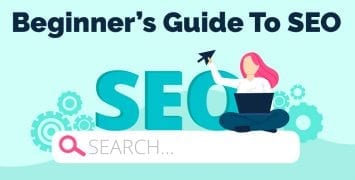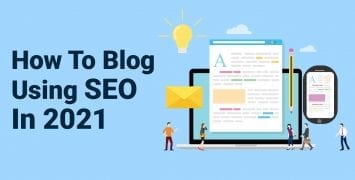Search engine optimization is designed to attract as much traffic as possible. Sometimes we get so focused on the large numbers that we forget to look at the smaller picture. But remember: Each customer is a person with unique wants and needs.
Not everybody on Earth is a potential customer of your product or service. You’ll make the most of your resources when you focus in on the groups of people who are likely to be interested in what you’re selling.
When you know who your customers are, you can more easily speak their language. Creating a connection helps your potential customers trust your brand also leads to increased sales.

How to Identify Your Potential Customers
Before you can market to your target audience, you need to find them. There are many different ways to do this.
Social media is a great tool here. You can actually see the people who are interested enough in your products to comment on your social media platforms. Even better, you can see quite a bit about who they are by viewing their social media profiles. You can learn more about their demographics and interests.
If you have a lot of social media followers, you won’t be able to personally view each page, of course. But you can still check out a random sampling from time to time.
You should also be using Google Analytics to measure your customer base. But we’re guessing you already know all about that. What many marketers often fail to properly implement is a Buyer Persona

What’s a Buyer Persona?
Also called a Customer Profile, this a semi-fictional biography of a typical customer. Thisn’t an accurate representation of every single potential customer. Instead, a buyer persona represents general traits found in many of your customers. The Buyer Persona is who you gear your marketing towards.
A complete Buyer Persona creates a full picture. What does the typical day of your buyer look like? What problems are making them turn to your product or service? What interests do they have? What are their friends and family like?
Because the “Buyer” in the Buyer Persona is fictional, many companies think Buyer Personas have little value. This far from correct, however. For instance, Zappos focuses a significant amount of time and resources on developing Buyer Personas. This led to a company culture which is extremely customer focused – perhaps among the best in the world.

Social Media
I’ve had a lot of success with Facebook’s Audience Insights. This converts broad targeting data into more narrow data about who is more likely to convert.
Even a basic Buyer Persona can yield great results with Audience Insights. You can input general demographic information, such as an average age range and country location.
For interests, you’ll want to enter keywords related to your industry. Remember, this might include terms directly related to your competition, including their brand names. People searching for your competitors are also likely to be interested in your brand.
You want to enter about five to seven interests. Less and your data won’t be specific enough. More and you’ll be casting too wide a net.

Analyzing Your Audience
Aside from age and geographic location, you can also learn a variety of other info including:
- Gender
- Marital Status
- Education Level
- Income
- General Job Type
Then there’s the Top Category section. This shows you what pages people like in each of the categories shown. Your customers have a variety of interests beyond your brand or even your industry (no offense intended, of course). The more you know about the likes of your audience, the more you can speak their language and create a connection.

Create Your Targeted Ads
Alright, using our own research as well as the results of Audience InSights, we’ve now created a Buyer Persona. Now it’s time to target towards the Persona.
This will still require some refinement. For instance, assume a large portion of your audience has a similar taste in music. But your product or service you provide really has nothing to do with music. Should you include references to bands and such in your ads? Usually, no.
You want to use split testing to determine which commonalities actually help create a connection with your audience, and which are just a coincidence.

Final Thoughts
Building a Buyer Persona can be a bit time consuming up-front. But the rewards really pay off with increased customer engagement and increased leads. So take the necessary time to analyze exactly who your customer base consists of. I promise you’ll be glad you did.




